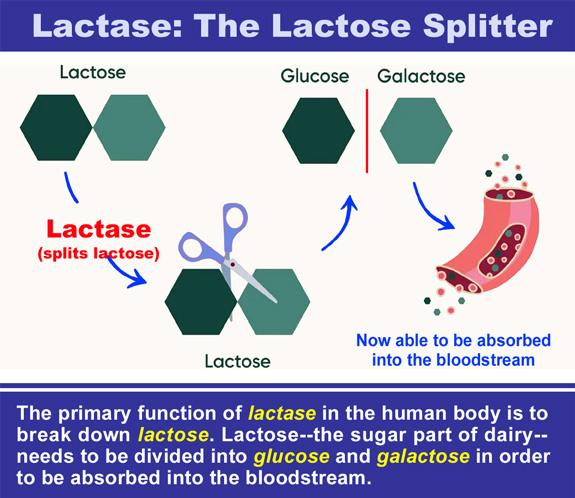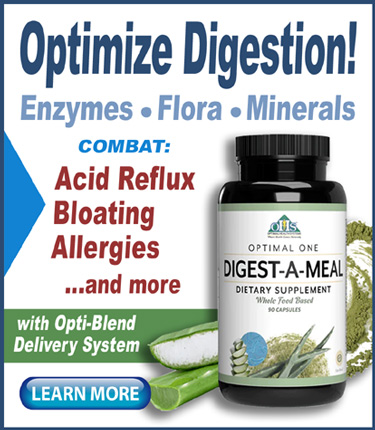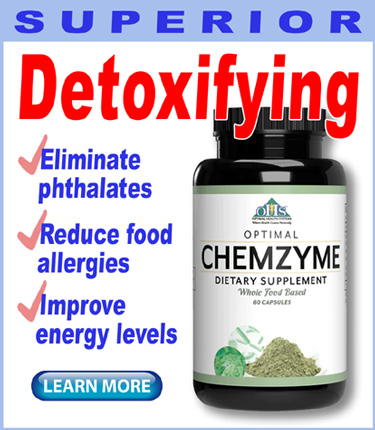Dairy allergy ranks as the second-highest allergy in the U.S. Only shellfish allergies are more common. In Africa and Asia rates of dairy allergies are even higher.
When is comes to lactose intolerance—a separate disorder from allergy—rates are considerably higher. While FoodAllergy.org pegs the number of Americans with dairy allergies at 6.2 milliion, it is estimated that a whopping 30 million Americans have lactose intolerance.
Intolerance versus allergy
Lactose intolerance is considered a digestive disorder. In the people with the condition, their bodies don’t make enough lactase, the enzyme needed to digest lactose. In simple terms, lactose is the sugar in milk, making up 2–8% of milk by mass.
Because of the lack of lactase, people with the condition don’t digest the lactose normally in the stomach and small intestine. Instead, undigested lactose moves into the colon where it’s broken down by bacteria—an inefficient process that causes significant bloating and gas. It can be uncomfortable, but it’s not dangerous.
Dairy allergy, on the other hand, involves the immune system. When people with a full-blown dairy allergy drink milk their body reacts to the proteins in the milk as if they’re dangerous invaders. This reaction to a perceived threat is shown by symptoms that range from mild to severe. A mild reaction may be a rash or skin irritation while severe may as dangerous as breathing difficulties.
In a previous post we discussed phytase enzymes and how they help assuage protein allergies. Read that article here.
In this article we’ll cover the enzyme lactase, and how it is proven to provide some degree of relief for those with lactose intolerance.
Lactase defined
Technically speaking “lactase” is a generalized term. Scientifically, lactase is Microbial ß-galactosidase.
Like all enzymes lactase is a type of protein that serves as a catalyst for biological action. In the human body, lactase is one of the digestive enzymes that break food into tiny particles that can pass the “brush border”—a chemical boundary that food must cross for absorption by the intestines.
Specifically, lactase breaks down lactose—the sugar part of dairy. The lactose is broken into simpler sugars called glucose and galactose.
This process enables the intestines to absorb those sugars for immediate use or storage as energy for powering the body’s movements and processes.
Commercially lactase can be purchased in nutritional supplement form, and they can also be added to milk to manufacture “lactose-free” milk products for lactose-intolerant people.
This technology, which carries out the function of “hydrolyzing” the lactose naturally found in milk, was created by the Agricultural Research Service in 1985.
Lactase for supplementing aren’t “manufactured”. It would be more appropriate to say they are cultivated or farmed.
The two major sources for cultivated lactase are yeasts and fungi. From yeasts, the species Kluyveromyces fragilis and Kluyveromyces lactis are utilized. From fungi Aspergillus niger and Aspergillus oryzae are cultivated.
Both of these sources—yeasts and fungi—have been used in industrial applications for decades.
Problem & solution for the lactose-intolerant
It is frequently suggested that people with intolerances to lactose just stop consuming dairy products; however, that can be a challenge in modern society. Besides the fact that most people simply enjoy the taste of dairy products, there is often some dairy involved in the manufacture of products that aren’t typically thought of as dairy products.
In addition, decades of declining nutrient levels in farmed foods means a modest amount of dairy products—especially raw dairy—can provide nutrients that may be deficient in one’s diet.
A 2021 review published in Cambridge University Press notes:
“The total elimination of milk and dairy products from the human diet can have a negative impact on. Therefore, several approaches have been investigated to reduce lactose intolerance symptoms and to manipulate the presence of lactose in dairy foods and ingredients. Lactase supplements from yeast and fungi have also been shown to reduce symptoms associated with lactose intolerance by replacing the body’s missing lactase enzymes.”
Additional research
A 2014 study found that while lactase supplements don’t help everyone, the vast majority of lactose-intolerant people do see some degree of benefit.
Utilizing a measuring system known as the hydrogen breath test, researchers found only 18% of lactose-intolerant subjects were “completely unresponsive” to lactase supplements. Meanwhile, 82% saw some degree of improvement—including 22% who showed “complete normalization”.
More recently, a 2020 study concluded: “Orally supplemented lactase enzyme significantly reduced the clinical symptoms and hydrogen breath excretion in patients with lactose intolerance.”
Additionally, an Italian study published in 2021—also utilizing the hydrogen breath test—found that lactase enzymes, probiotics and prebiotics were all helpful in offsetting lactose-intolerance.
– – –
Lactase is an essential part of the formulas in the following Optimal Health Systems products:
• Optimal Chemzyme
• Optimal One • Digest-A-Meal
– – –
Sources: Links to all studies and definitions noted in body of article.



